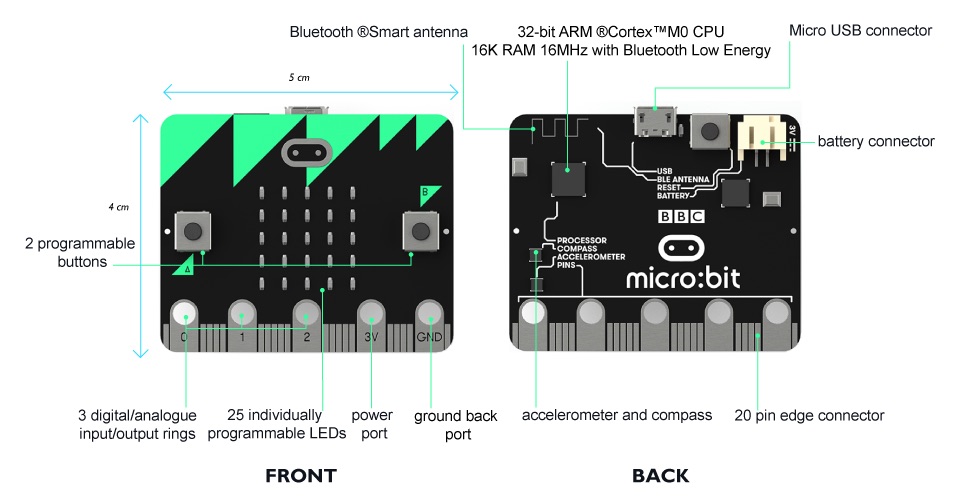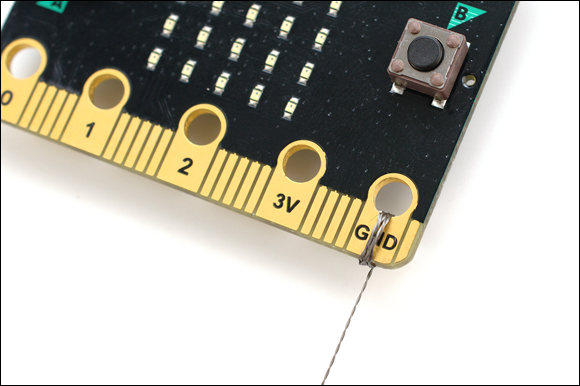About the Micro:bit¶
How does it look¶

source: micro:bit website
(*) of course it depends on how much time the board is “on”
Features¶
- 25 individually-programmable LEDs
- 2 programmable buttons
- Physical connection pins
- Light and temperature sensors
- Motion sensors (accelerometer and compass)
- Wireless Communication, via Radio and Bluetooth
- USB interface
Microcontroller¶
It is a 32-bit Nordic nRF51822 ARM Cortex-M0 running at 16 MHz, with 256 kilobytes of flash memory, 16 kilobytes of RAM, and a 2.4 GHz radio capable of Bluetooth low energy [BLE] networking.
Pins¶

See Pinout
Building circuits¶
Different “break-out” boards help you to create circuits using the smaller pins. These boards host a connector where you can fit the micro:bit and provide standard pins to connect your external components.
Octopus Bit¶
This board is equipped with logic-level shifter so you can use the micro:bit with 5V components without damaging it.

See ELECFREAKS Octopus:bit User Guide
Micro:bit for wearables¶
- Small size
- Low power
- “Weeks” on two AA batteries (*)
- Sewable pads, can be connected with conductive thread
